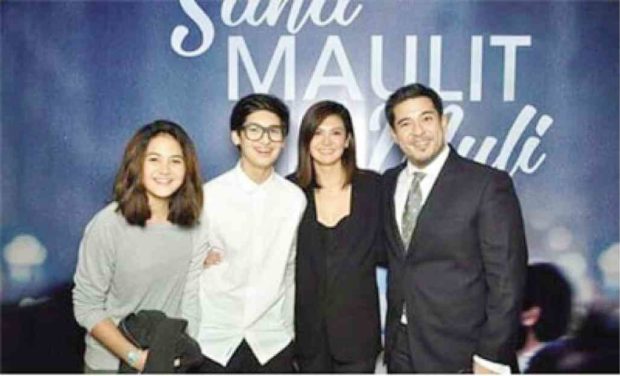History Maker Aga Muhlach is no history buff
Actor Aga Muhlach readily owned up that he wasn’t much of a history buff as a kid.
“When you are young, you don’t care about history,” he admitted. “It’s the most boring subject when you are in high school.”
The irony is not lost on him since he is one of the History Maker honorees of the History Channel. That was why he was quick to emphasize, that he has since learned to appreciate the past and the finer things in life—especially since he has become a connoisseur of Filipino architecture and antiquity.
“I’ve been collecting furniture from the 18th and 19th centuries, so I try to study the background of these things,” he told the Inquirer in an exclusive interview at the recent History Con. “I get to learn the story behind each piece.”
A fan of such History Channel series as “Pawn Stars” and “American Pickers,” Aga is well-versed on various furniture terms like kilo (curved cabriole legs of tables), which indicates Chinese influence; or the Sheraton, which is a British contribution.
“A certain piece of furniture becomes more expensive if it is rare,” he explained. “In the 1800s, there were only a few rich people who could afford those pieces.”
He related that he is building a nipa hut beside his family’s original home in the suburbs. “It’s a bahay kubo,” he noted. Adhering to traditional building methods, the modern kubo is well-ventilated, he clarified. “The air goes through and through. There is no need for air conditioning. An electric fan would do just fine.”
He, wife Charlene Gonzalez and their twins Atasha and Andres are ready to move to the bahay kubo anytime soon.
As for his own personal history, he is not as meticulous.
Although his numerous acting trophies are kept in a safe place somewhere, they are not displayed in his house, where there are no reminders of the business of show. “Once I get home, everything is normal,” he pointed out. “I don’t even have copies of my own movies.”
He explained that when he makes a film, it is not for himself, but for the audience.
“Should I win an award for it, I’d be grateful. But the real reward is when I hear viewers express their appreciation for our work. That makes me very happy.”
When he makes a movie, it’s for the audience to enjoy, “but the memories of movie-making, [that’s what] I keep,” he asserted.
He seldom acts in movies these days. “I do just one movie a year or one movie every two years.” He aims to nurture every project because “I want the audience to see real love, real joy, real pain, on screen.”
He is uncertain whether he could apply his leisurely yet thorough work style on television, where the pacing is more frenetic and frenzied. “It’s like you are just working for money. There is nothing wrong with that and, at some point, I would like to experience that, too … at least once.”
But the sleepless nights, the swift shifting of emotions in every scene, the grueling daily grind, “I don’t think I can hack it.”
In the meantime, Aga got to finish two movies shot abroad, with Bea Alonzo and Alice Dixson, in quick succession.
“I’ve been in and out of the country,” he related. “I was in Vancouver, Canada, with Bea for the movie directed by Paul Soriano, while my movie with Alice was filmed in Greenland by Veronica Velasco.”
He enthused: “Bea’s good. As an actress, she’s a purist. Very old school.”
He is gratified to be given the opportunity to collaborate with the new breed of directors. “They have their own style naman. We shot for one month straight. We worked every day.”

